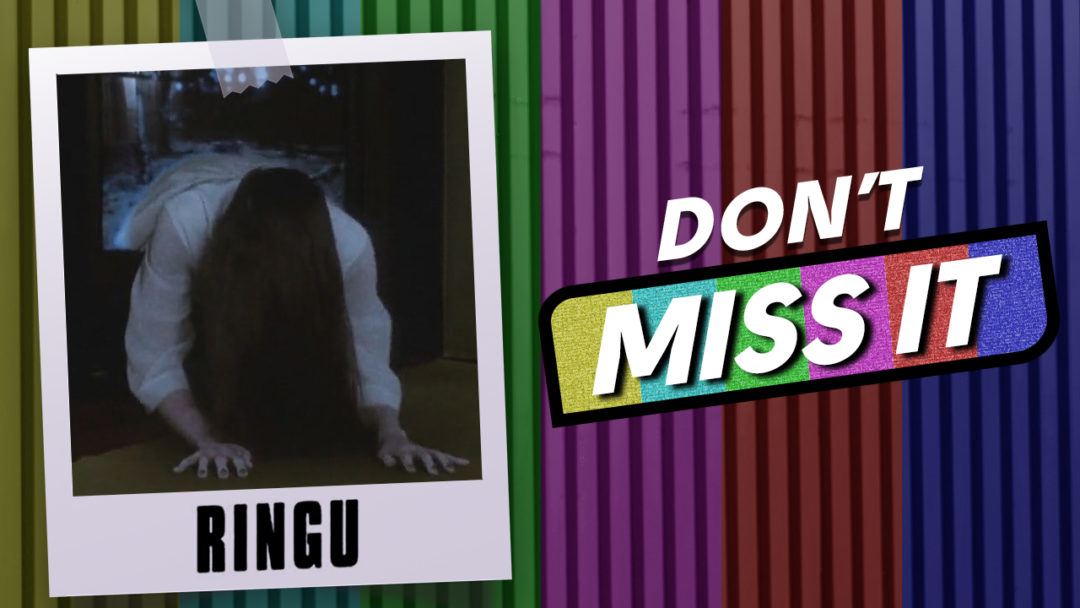Ringu has become a cultural touchstone in the two decades since its original release. The film was a breakout hit, paving the way for other Japanese horror movies like Takashi Miike’s Audition to reach global audiences. It was also the rare international horror film to receive a well-reviewed American remake, with Gore Verbinski’s The Ring launching its own English-language franchise.
Ringu remains haunting and effective despite its ubiquity. The premise of the film, adapted from Koji Suzuki’s novel, is so simple that it has been absorbed into the cultural consciousness. A haunted video tape is passed from person to person. After watching the macabre and abstract footage, each viewer receives a phone call warning that they have only seven days to live.
A large portion of Ringu’s strength derives from the simplicity of that hook. The horror at the heart of Ringu is so flexible that it can work as a metaphor for any number of fears. It was both timeless and timely. Despite a plot that hinged on VHS tapes, Ringu spoke to anxieties of the emerging internet age.

The film was released just as the internet was becoming a potent force in everyday life. At the time, the film felt like a metaphor for those creepy chain letters that would circulate in newsgroups, the sort of internet traffic that was captured at the time on Snopes and would come to be described as “viral” or “mimetic.” The monster in Ringu haunts screens and cathode-ray tubes.
At the same time, the actual horror story at the heart of Ringu is decidedly old-fashioned. It’s a tale of dark family secrets, haunted spaces, a soul that cannot rest, and a secret that cannot be buried. Ringu is gothic horror for the Information Age. It is a perfect fusion of old and new intersecting at the turn of the millennium. This is probably why the film has aged so well.
Director Hideo Nakata shoots Ringu like a gothic horror story that just happens to feature Polaroids and telephones. Heavy clouds hang over Tokyo, rain perpetually pouring down on the city. The film’s sound design plays up these primal and elemental forces, with the wind often audible on the soundtrack. Cinematographer Jun-ichirô Hayashi presents a world of washed out grays and dull greens.

As with many of the best ghost stories, Ringu builds slowly across its runtime, creating a palpable anxiety as the clock counts down. Ringu may have helped popularize the modern trend of rule-based horror movies like It Follows or even Countdown, which are structured as existential mysteries as much as macabre ghost stories.
That atmosphere is largely missing from the two follow-ups, Nakata’s sequel Ringu 2 and Norio Tsuruta’s generic and derivative prequel Ringu 0. As with most horror sequels, the series faces diminishing returns.
To mark the film’s 20th anniversary, Hayashi supervised a 4K restoration of Ringu from the original camera negative. Arrow Films released a Blu-ray edition of the 4K remaster of Ringu for British audiences in March, including a limited theatrical run. That Blu-ray was released for the North American market on Oct. 29. Arrow has also released a collection including Ringu 2 and Ringu 0, for those interested in the complete set.






Published: Nov 3, 2019 01:00 pm